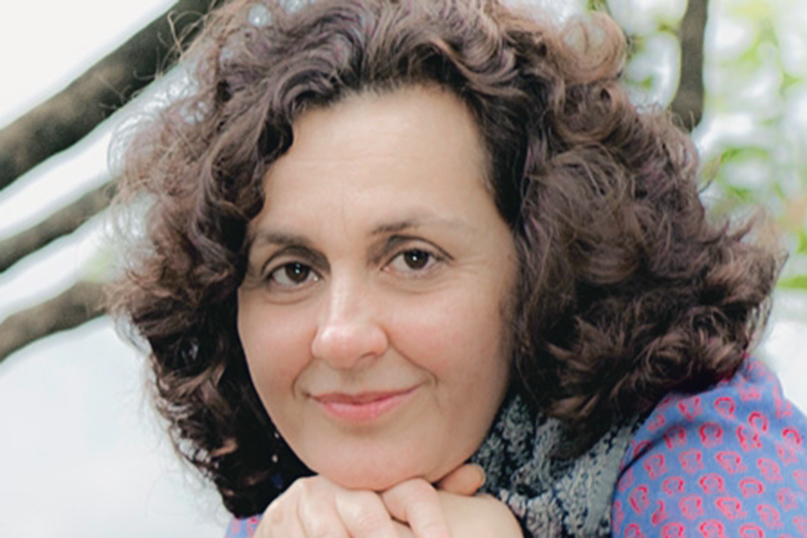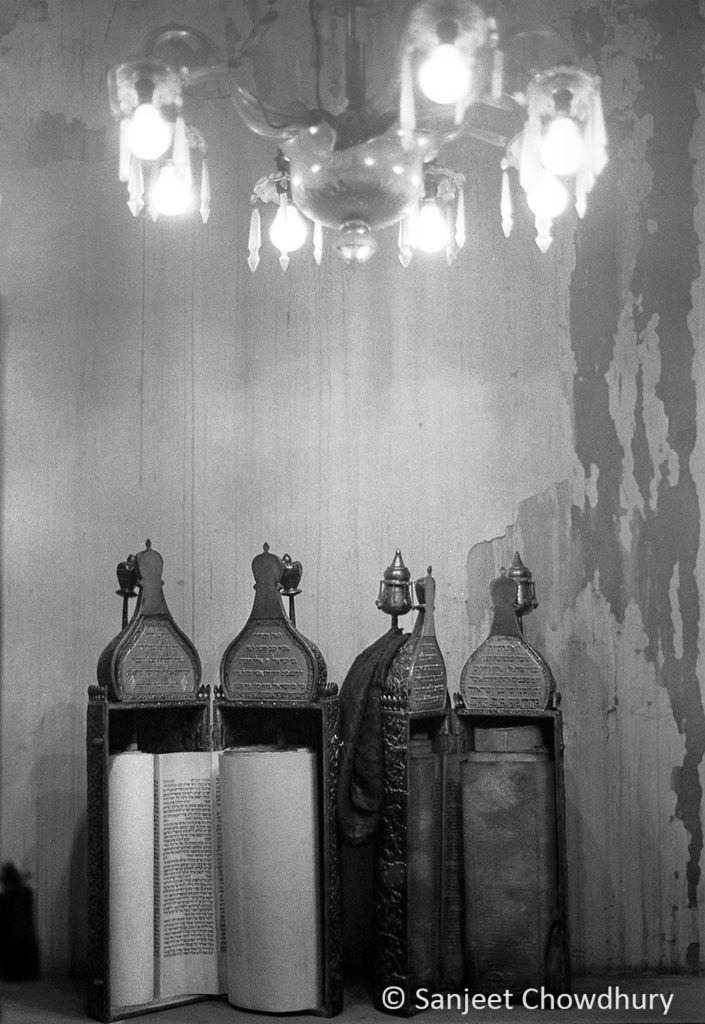
Though few Jews remain in Kolkata, India (formerly known as Calcutta), their rich Jewish culture lives on.
By Stacey Dresner
NEW HAVEN – For more than two centuries, the Jews of Calcutta – now known as Kolkata (which is how Kolkata is referred to in this article) – flourished as prosperous traders and business owners, and experienced excellent relations with both the general Indian population and the British who colonized the country. The small but thriving community did not experience antisemitism in India and, in fact, helped to rescue a number of Jews fleeing Europe in World War II.

While only about 20 Jews are left in Kolkata, much remains of the Jewish culture, including three beautiful synagogues, two Jewish schools – with no Jewish students – a Jewish cemetery – wherein gravestones are occasionally written in three languages – and even a popular Jewish bakery called Nahoum’s.
Jael Silliman, who was born in Kolkata to a Jewish Baghdadi family, will discuss the Jews of Kolkata at Congregation Beth El-Keser Israel (BEKI) in New Haven on Saturday, Feb. 22 at 12:45 p.m. Her talk also provides context for BEKI’s current exhibit of photographs by independent photographer/filmmaker Sanjeet Chowdhury, whose work illustrates the diversity, poignancy and history of this unique Jewish culture.

Silliman earned her B.A. in History and Politics of South Asia and China from Wellesley College, an M.Ed. in Planning and Administration for International Development from Harvard University. She received an M.A. in History from the University of Texas-Austin, and a Ph.D. in Education from Columbia University.
Silliman, who lives in both Kolkata and New York City, is author of Jewish Portraits, Indian Frames: Women’s Narratives from a Diaspora of Hope (2001), about four generations of her family. She recently developed the digital archive, Recalling Jewish Kolkata. An author, scholar, and women’s right activist, she currently works as a consultant on gender and development, women of color and reproductive rights, and gender and environment issues.
In advance of her talk in New Haven, she spoke to the Ledger about the history of the Jewish community in Kolkata.
JEWISH LEDGER (JL): How did your family come to settle in Kolkata?
JAEL SILLIMAN (JS): My father’s ancestors were the first family to come to Kolkata from Aleppo, Syria in the late 1790s. They were traders and Shalome Cohen traded in precious stones. He first came to Surat on the west coast, but seeing the British were a rising power with their base in Kolkata, he moved there. Realizing the many trading opportunities in the second city of Empire, his relatives soon followed.
My mother’s family came much later, in the mid-nineteenth century from Basra. They were religious people, not traders, and were caretakers of Ezra’s Tomb, a holy place for both Muslims and Jews.
The Jews of Kolkata are referred to as the Baghdadi Jews, who constituted the majority of the community that came from many parts of the Middle East. The community also followed the Baghdadi liturgy.
While Kolkata was a very important hub for the community, they settled in port cities from Baghdad to Shanghai, which I call Jewish Asia.
JL: Tell us a little about the three main communities of Jews who have made India their home.
JS: The oldest of the three major communities in India is the Bene Israeli community, who settled on the Konkan coast in small villages. They were believed to have been shipwrecked off the Western coast of India sometime around 175 CE.
The next were the Jews of Cochin who came to the southern part of India sometime around the 10th century. Later, Jews from Europe also came to Cochin and are called the White Jews of Cochin.
It was in the last decade of the 18th century that the Baghdadi Jews came to Kolkata when the British had already established a foothold in India.
JL: What was life like for Jews of Kolkata through most of its history?
JS: The Jewish community of Kolkata never faced any form of discrimination and thrived under British Rule. Several wealthy members of the community made great fortunes, first in the opium trade and later in other export commodities as well as in real estate. They were philanthropic and supported the poorer members of the community as waves of immigrants fleeing persecution or looking for economic gain came to Kolkata. The rich had their own companies, which supported many of the middle-class Jews who were hired to work in these Jewish-owned businesses. Jews were very well respected and thrived in many professions. They truly had a global footprint and their contributions was way larger than the number of Jews living in Kolkata would suggest.
At the peak in the early part of the 20th century there were about 4,500 Jews in a very populous city. The Jews were also trailblazers in many professions including in film and photography. As the women were educated, they were among the first women in many professions including in medicine, dentistry as well as in the Chambers of Commerce.
Though many Jews left India after it gained independence, for a raft of reasons, those who stayed on prospered. In the post-independence period, General J.F.R. Jacob, the hero of the Bangladesh Liberation War of 1971, and Governor of Goa and the Punjab, was from the community.
JL: What was their relationship with the British Colonialists and general Indian Population?
JS: As the Bagdadi Jewish community came to Kolkata during the colonial period, they were very loyal to the British and aspired to be like them. They had come from Arab lands and were Judaeo-Arab in their identity. They spoke Arabic and wrote Arabic using Hebrew script. They were religiously conservative and were allowed to practice their religion freely. Several Jews worked in the British administration. However, they were never granted European status.
They were also very comfortable among the Indian population and lived in mixed neighborhoods. By the early twentieth century most Jews spoke English but they also were able to speak enough Hindi and Bengali to be comfortable in those environments too.
When the British left, they were unsure of their position in the New India as they did not know what direction the country would take. However, those who stayed on adopted Indian citizenship and did very well in the new India. Those who left kept their ties to Kolkata and took Kolkata with them to the new countries to which they emigrated – primarily London, the USA, Australia and Canada. A few also went to Israel.
JL: So, Jews in Kolkata weren’t faced with antisemitism?
JS: There was no cultural animosity to Jews, as there was in Europe – it was not a part of the Indian culture. India has always been a very heterogeneous country where people of many faiths have lived closely together. Furthermore, Hinduism is a religion that is very broad, with many kinds of Hindus under this broad umbrella. There is a tendency for Hinduism to absorb other gods in their pantheon. As it is not monotheist, there is no belief that there is only one true God. Many forms of worship are thus accepted.
JL: Can you describe the Jewish community of Kolkata today?
JS: There is no Jewish community in Kolkata today. I would say now there are a handful of Jews living in Kolkata. We still have three synagogues, two schools which have Jewish names and are “managed” by Jews, but there have not been Jewish children going to them for more than 40 years. The Jewish Girls School, for example, has 90 percent of its students drawn from the Muslim community. This happened because the area in which it is located has become a Muslim-dominated area and over time has gained a very respected name in the Muslim community. There is also a large cemetery. Most of the Jews who are left in Kolkata are very old.
Very recently, Star Kosher has moved a rabbi and his wife to Kolkata as they are sourcing foods for their business from the Northeast. As they are religious, the young rabbi says the Shabbat prayers and hosts a dinner at the synagogue for community members and other Jews who are visiting the City.
JS: How did photographer Sanjeet Chowdhury come to create his exhibit on Jewish Kolkata?
JS: Sanjeet was interested in learning more about the community and met with many community members and visited our institutions. There is considerable interest in the community from the public as people from Kolkata are proud of their multi-cultural past.
I have also been writing about the community. The development of the digital archive www.jewishKolkata.in that I have curated has generated a lot of interest in India and beyond. There are now several movies on the community made by Indian filmmakers and the synagogues are increasingly on the tourist map for locals as well as foreign tourists.
JL: What would you like people to know about the Jews of Kolkata and their contribution to India and the world?
JS: I would like them to know that there was a flourishing Jewish community in Kolkata made of Arab Jews who lived and worked closely with Muslims, Hindus, Christians and Armenians and all these communities gained from this interaction.
This micro-community made very significant contributions to India and the world. For example, they played a pioneering role in trade, in film, and provided a refuge to Jews from Europe and Southeast Asia during the tumultuous years of the Second World War.
They contributed to the religious world of Jewry by very generous donations to Jewish religious sites. For example, Josef Abraham Shalom Josef from Kolkata (1833-1911) was a big donor to institutions in the land of Israel. He built the first hospital in Jerusalem – Misgav Ladach in 1900, and in Hebron in 1909. After his death, The Greatest Sefaradi Yeshiva (until today), Porat Josef, was built by his children in the old city of Jerusalem just beside the steps going down to the Kotel. He already bought the land before he died and the Yeshiva bears his name until today. Even after Independence, they continued to contribute to India as is exemplified by General J.F.R. Jacob who was a decorated war hero in India.
The Kolkata synagogues, especially the Maghen David and the Beth El are splendid synagogues. At one time each of them had almost 100 Sefer Torahs which were encased in wood and then covered in ornate silver cases which were exquisitely worked. Most of these sefer Torahs are now in synagogues in other parts of the world as community members took them with them when they emigrated.
India is very proud of its Jewish heritage and the Bagdadi Jews of Kolkata are very grateful to India, a host country that was their home for more than two centuries.
Jael Silliman will speak at Beth El-Keser Israel (BEKI), 85 Harrison St., New Haven, on Saturday,Feb. 22, 12:45 p.m. For more information: (203) 389-2108.








 Southern New England Jewish Ledger
Southern New England Jewish Ledger










